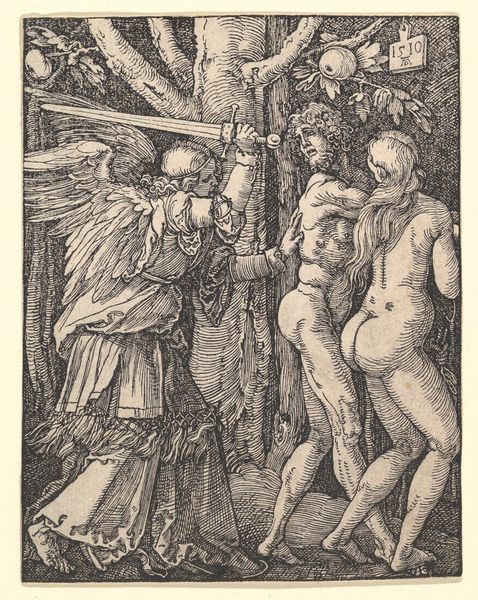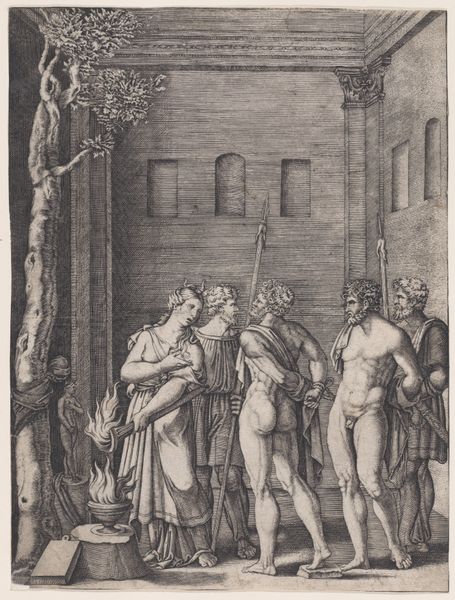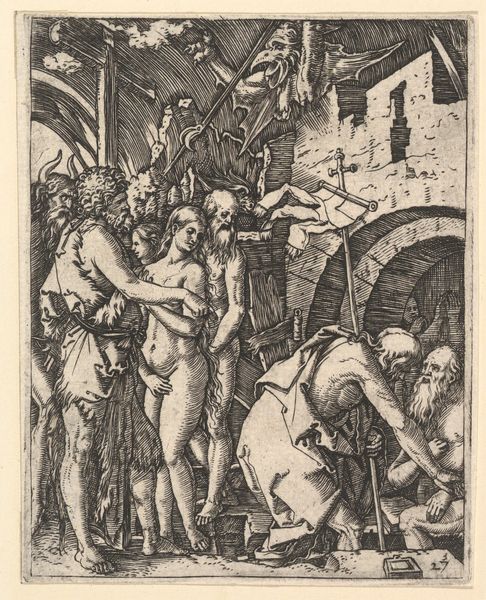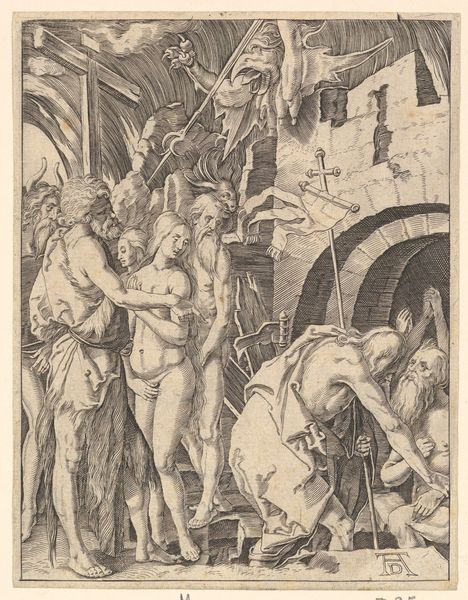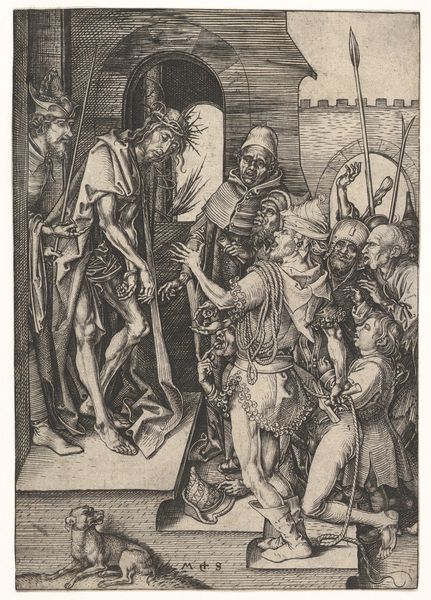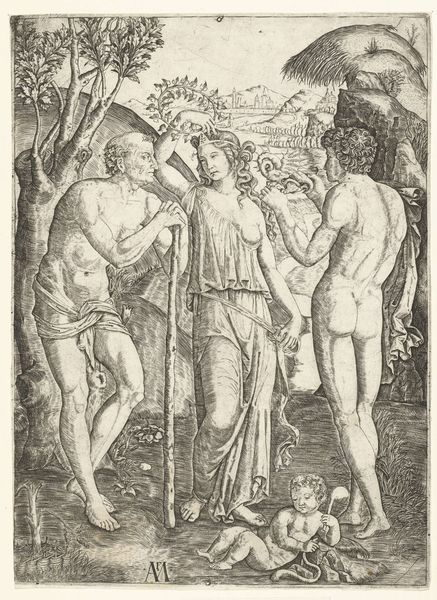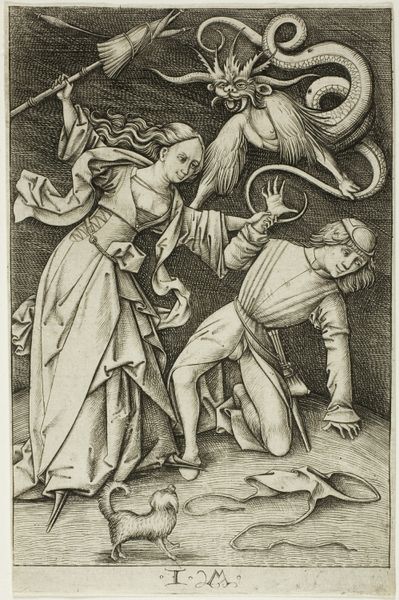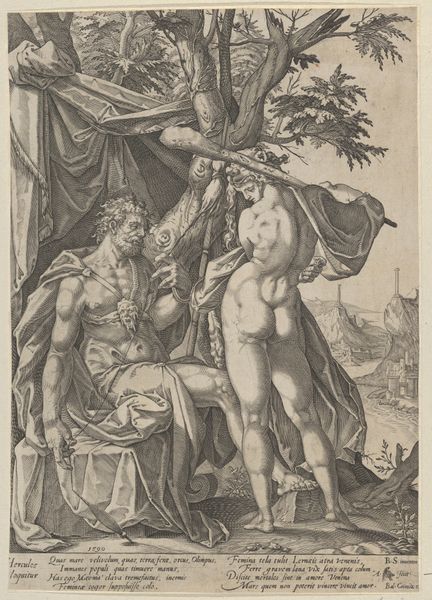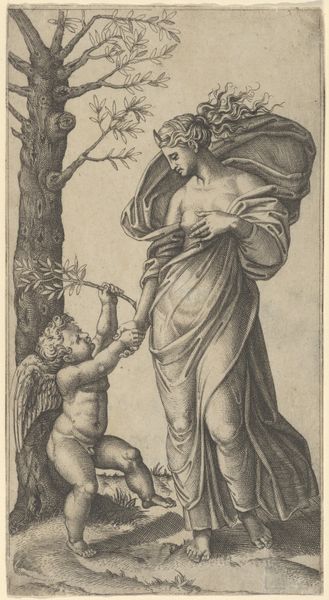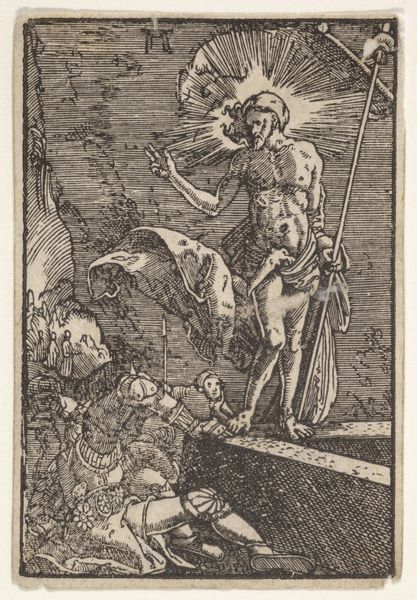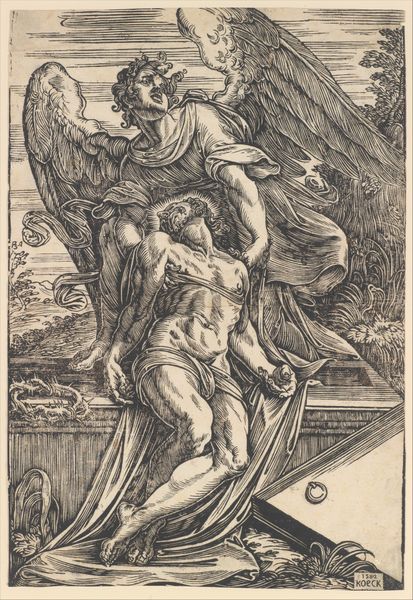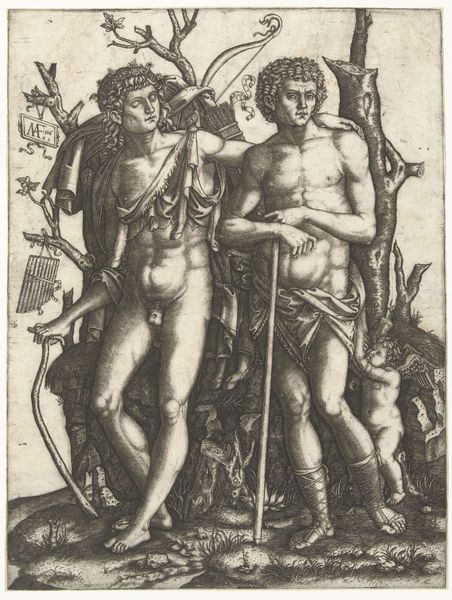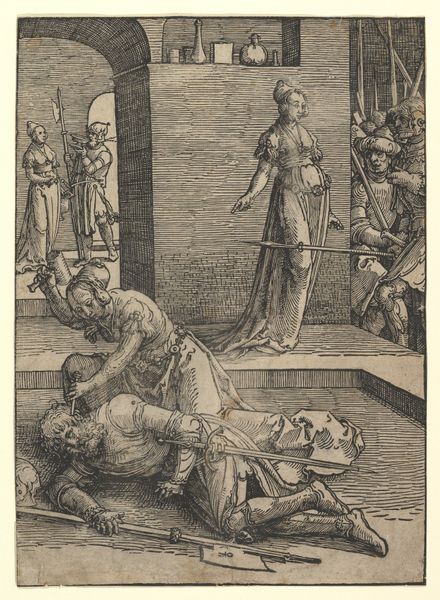
The Expulsion from the Paradise, after Dürer 1495 - 1539
0:00
0:00
drawing, print
#
drawing
#
pen drawing
#
mechanical pen drawing
# print
#
pen illustration
#
pen sketch
#
sketch book
#
personal sketchbook
#
female-nude
#
pen-ink sketch
#
pen work
#
sketchbook drawing
#
sketchbook art
#
male-nude
#
angel
#
christ
Dimensions: Sheet: 5 7/16 × 3 7/8 in. (13.8 × 9.9 cm)
Copyright: Public Domain
Curator: Before us is a print dating roughly from 1495 to 1539, Marcantonio Raimondi's "The Expulsion from Paradise, after Dürer," currently held at the Metropolitan Museum of Art. Editor: My first impression is the density of the lines! It’s so graphically arresting, but also evokes this claustrophobic sense, like they're trapped not just outside paradise, but within the confines of this composition itself. Curator: Precisely! Look closely at the interplay of light and shadow, achieved through the rigorous cross-hatching. Raimondi masterfully employs line to define form and texture; observe how the angel's garments contrast with the smoothness of Adam and Eve's figures. Editor: And that angel is wielding a serious sword! It's not a gentle ushering out; this is forceful, almost brutal. How much was the piece itself about social control or judgement, especially for a public audience? Curator: Consider the positioning of the figures. Adam and Eve are almost recoiling into each other as they are thrust away, almost ashamed. Raimondi’s visual language presents their expulsion not as liberation, but as a direct consequence of their disobedience to divine law, reflecting social norms around obedience during that historical moment. Editor: The figure of the angel is fascinating, too, almost severe in their commitment to their divine role, it's really an intense representation of the transition of Adam and Eve's fate, don’t you think? Curator: Undeniably. The graphic elements – the strategic deployment of dense, interwoven lines, as well as its historical resonance speak to a narrative larger than mere expulsion. The piece exists as a meditation on moral failure as much as the specific consequences of transgression. Editor: Yes, so beyond simply the fall of man it encapsulates notions of sin and shame, and societal judgements— quite a bit more than the visual details might suggest. It's truly compelling from both formal and contextual vantages.
Comments
No comments
Be the first to comment and join the conversation on the ultimate creative platform.
